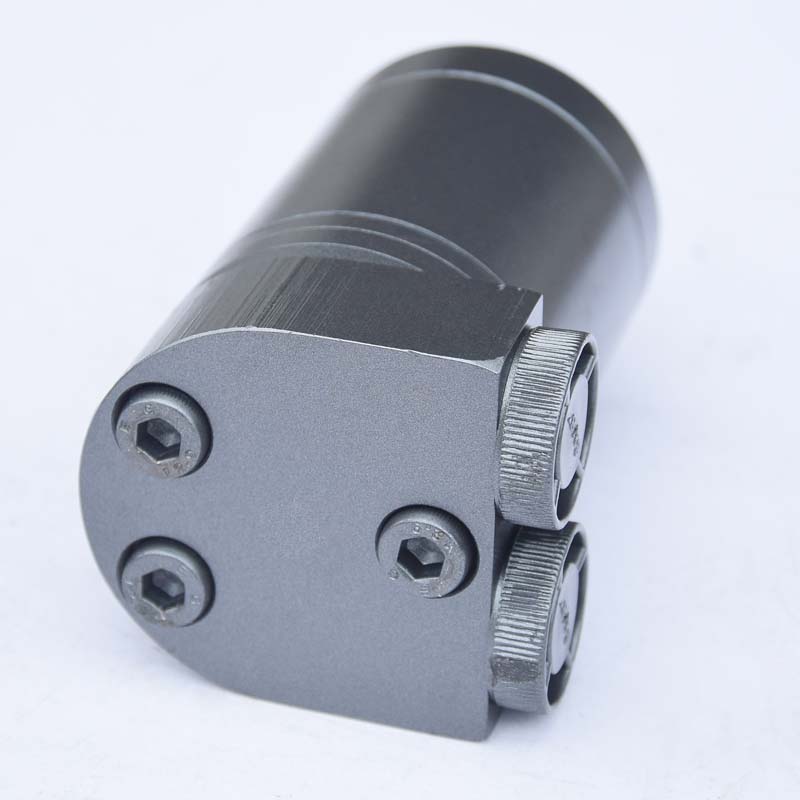Cycloid hydraulic motor : The inner gear ring is firmly connected with the housing, and the oil entering from the oil hole pushes the rotor to rotate around a midpoint. This kind of slowly rotating rotor drives the output shaft to become cycloid by means of spline shaft Hydraulic motor 。 This kind of initial orbit motor After its debut, after many years of evolution, another definition of motor has gradually been established. This type of motor is assembled with roller bearings in the embedded gear ring. The motor with roller bearings can bring high starting and running torque. The roller bearings reduce friction, thus improving the working efficiency. Even at a very low rotational speed, the output shaft can form a relatively stable output shaft. By changing the direction of input and output flow, the motor can quickly change direction and form equivalent torque in two directions. The motors of all series of products have various displacement options to meet the needs of various speeds and torques.
The cycloidal hydraulic motor is a micro low-speed and large torque hydraulic motor with one shaft flow distribution and inserted tooth stator and rotor pair. Its advantages are as follows:
1. Small in size and light in weight, its size is much smaller than other types of hydraulic motors with the same torque.
2. The rotating speed range is wide, and stepless speed regulation is available. The extremely low and stable rotating speed can reach 15 rpm. The assembly layout is convenient, and the project investment cost is low.
3. In the hydraulic system, it can be used in series or in parallel.
4. The rotating inertia force is small, and it is easy to start under load. Both forward and reverse rotation can be used, and there is no need to shut down when changing direction. The cycloidal hydraulic motor is mainly used for a wide range of purposes, mainly in the slewing structure of various equipment such as agriculture and animal husbandry, fishery breeding, light industry, hoisting, logistics and transportation, mining, engineering machinery and equipment.
Examples of overseas application of cycloidal hydraulic motor:
1. For agriculture and animal husbandry: various combine harvesters, seeders, micro tillers, lawn mowers, sprayers, feed mixers, and road drilling equipment.
2. For fishery and aquaculture: net lifter.
3. For light industry: winding machine, loom, printing equipment, industrial washing machine for business.
4. For engineering construction and industrial construction: small road rollers, concrete mixers, road sweepers.
2、 Structure and characteristics
The cycloidal hydraulic motor is formed by the integration of the output shaft and the port valve. The main structure of the cycloidal hydraulic motor with a toothed stator and rotor pair is shown in Figure 1. Its main functional features are as follows:
1. The end face and axial face flow distribution are adopted, with compact structure and high accuracy;
2. Adopt inserted tooth stator and rotor pair, with high mechanical efficiency and long service life under high pressure operation;
3. Double angle ball bearings are adopted, which can bear relatively large radial and axial loads, with small friction and high mechanical efficiency.
4. Advanced flow distribution structure design, featuring high flow distribution accuracy and self compensation for damage.
5. The motor can be used in series or parallel, and the external oil drain hole should be connected when the motor is used in series.
6. The tapered roller bearing support design is adopted, which has a relatively large radial bearing capacity, enabling the motor to push the working structure at the same time.
7. Various flange, output shaft, oil hole, etc.
3、 Common precautions for operation
(1) Before operation, check whether all components of the hydraulic system are correctly connected, and add oil to a specific height through the filter.
(2) Start and run for ten to fifteen minutes under no load condition, and carry out exhaust. Air in the system is indicated by bubbles in the hydraulic oil tank, noise in the system, and stagnation in the hydraulic motor oil cylinder.
(3) After the air is cleared, fill the hydraulic oil tank, and then gradually start to lift the load of the hydraulic motor until the load is extremely high. Check whether there are abnormal conditions, such as noise, oil rise and oil seepage.
(4) The oil can be changed once after 50 hours of operation, and then changed according to the maintenance standards.
(5) If there is no fault in the hydraulic motor system, please do not disassemble it at will.
4、 Removal and installation
When disassembling the Talimus hydraulic motor system due to failure, the following problems must be noted:
(1) Each fusion surface shall not be scratched during disassembly. If there is any scratch, it can be installed only after adjustment.
(2) Before installation, all parts shall be cleaned with gasoline or kerosene. It is strictly prohibited to use cotton yarn or rags to clean parts. Brush or satin shall be used instead. Do not immerse rubber seal ring in gasoline. After the hydraulic motor is installed, 50~100mL hydraulic transmission oil shall be added to the two oil ports before installation, and the oil shall be output during operation. If there is no abnormality, the machine can be installed.
(3) In order to ensure the accurate rotation direction of the hydraulic motor, special attention should be paid to the position relationship between the rotor and the output shaft.
(4) The rear cover bolts must be gradually tightened diagonally, and the tightening torque is 4~5 kgf · m.


![]()

